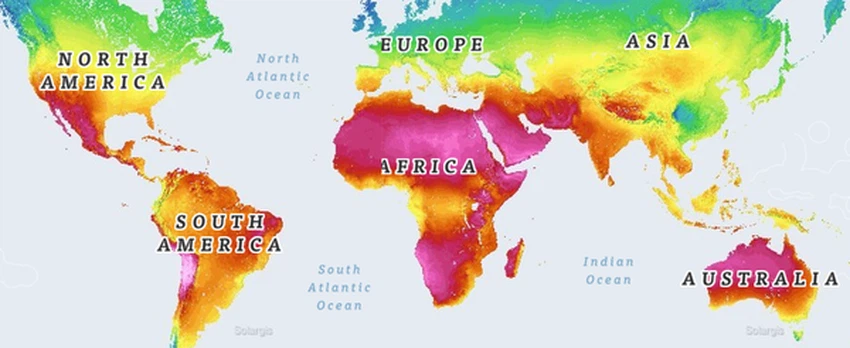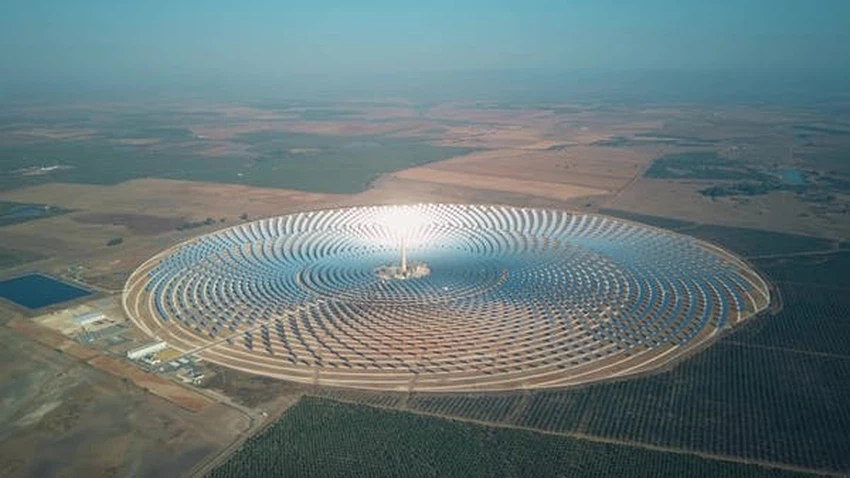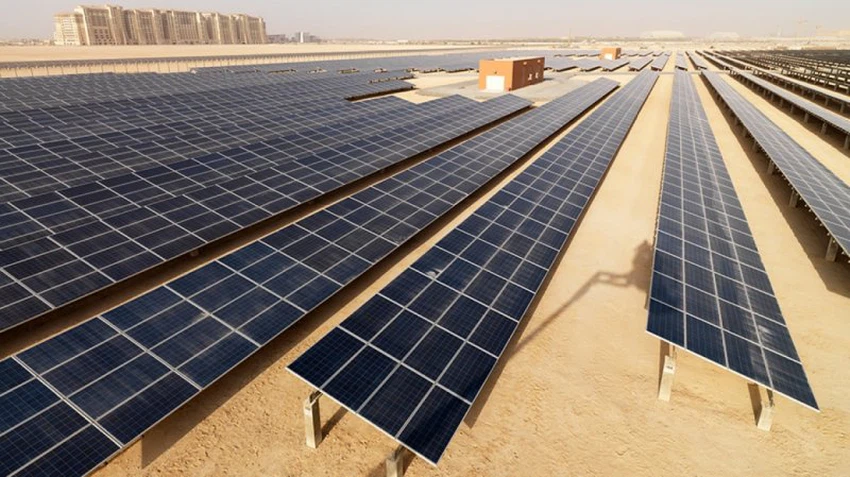What if | We covered the desert with solar panels
Weather of Arabia - Solar panels can provide a clean and sustainable solution to energy problems, in a world exhausted by pollution from fossil fuel combustion, but solar farms need a large area for large solar panels to be installed on, and the site must be exposed to a lot of sunlight, so where Can we find a large area of unused land that gets sunlight all day?! Of course in the desert!

(An image showing the amount of solar radiation that the world receives, as the Sahara in Africa and the Arabian Desert in the Arabian Peninsula are among the places that receive the most solar radiation)
What if we covered the Sahara desert with solar panels?
The main objective of using solar panels to produce electrical energy is to find a clean and inexhaustible source of energy, and the location of the Sahara desert provides greater ease in delivering electricity to Europe and the Middle East, and although there are many advantages to this project, it is not without its Some challenges and negatives.
Advantages of covering the Sahara desert with solar panels
1. It produces a large amount of electrical energy: The area of the Sahara is about 9.2 million square kilometers, and if it is covered with solar panels, it will produce the equivalent of 22 billion gigawatt-hours of electrical energy in one year, which is twice the world’s need of electrical energy, because covering Only 1.2% of the area of the Sahara has solar panels, enough to meet the entire world's electricity needs.
2. Reduce pollution and protect the Earth from climate change: Electric power plants that run on fossil fuels produce a large amount of greenhouse gas emissions that cause global warming and climate change, as do nuclear power plants, which produce radioactive waste and waste, but solar energy Clean energy that does not produce any emissions or pollutants.
3. Positive changes to the environment in the desert: If the desert floor was covered with giant solar panels, this would double the rainfall in the region, as the size of the increase in precipitation ranged between 20 mm and 500 mm annually, and thus the vegetation cover would increase by about 20%, This happens because the solar panels absorb a greater amount of the sun’s heat from the light-colored desert sand, which reflects a lot of light and heat in the air. The upper layers of the atmosphere, where the weather is cooler, the moisture in the air condenses and falls as rain, and thus the harshest climates on Earth will undergo a major transformation, and green spaces increase in the desert.
The challenges that the project may face and the negatives resulting from it
1. Low efficiency of solar panels due to sand storms: Sand storms that are frequent in the desert lead to covering solar panels with sand, which reduces their efficiency in absorbing solar energy.
2 . Clean Solar Panels: Dirty solar panels reduce their efficiency in using solar energy, and cleaning these panels can be a major challenge in a water-scarce desert environment.
3. The cost of electrical energy transmission: The production of electrical energy from solar panels in the desert is a wonderful thing, but the delivery of this electricity to the world may pose a great challenge, as it requires electricity lines and networks that may be very expensive for some countries.
4. Loss of part of the energy when transmitted over long distances: The transmission of electrical energy over long distances leads to a loss of some energy by up to 10%, which means adding an additional cost to the costly project,
Solar panels projects in the Sahara desert
Scientists have studied how the desert sun can meet growing domestic energy demand and ultimately provide power to Europe and nearby countries. These academic ideas have been translated into serious plans. Lots of funding from various banks and energy companies, but most investors withdrew after five years due to high costs, and such projects are usually delayed due to a variety of political, commercial and social factors, including the lack of rapid development in the area, and there are proposals for the TuNur project in Tunisia, which aims to provide electric power to more than two million European homes, or the Noor Solar Power Plant in Morocco which also aims to export energy to Europe.
Techniques for generating electricity from solar energy
There are currently two practical technologies for generating solar electricity:
1. Concentrated Solar Power ( CSP ): CSP uses lenses or mirrors to focus the sun’s energy in one spot, which becomes very hot. This heat then generates electricity through conventional steam turbines. Some systems use molten salt to store thermal energy, This also allows electricity to be produced at night.

(Photo of a concentrated solar power plant near Seville - Spain, mirrors focus the sun's energy on the tower in the center)
It seems that concentrated solar energy is more suitable for the desert due to direct sunlight, lack of clouds and high temperatures, which makes it more efficient, however, sandstorms can cover lenses and mirrors with sand, and one of the most important disadvantages of this technology is its use of water resources that are scarce in the desert, and its need for Water to clean mirrors.
2. Ordinary PV Solar Panels: Solar PV panels convert the sun's energy directly into electricity using semiconductors, it is the most common type of solar energy that can be connected to the grid or distributed for small-scale use in individual buildings, and it can also save some energy in the weather cloudy;

One drawback, however, is that when the panels get too hot their efficiency drops, which is one of the problems facing a solar panel project in the desert, where summer temperatures can exceed 45°C in the shade, so cooling the panels during the hottest part of the day adds to the cost. Additional, in addition to the problem of sandstorms can cover the panels with sand and reduce their efficiency, in addition to the need for water to clean the panels.
In conclusion, we can reflect on the improvement and development of solar energy technology over time, to become less expensive and higher in efficiency, as only a small part of the desert can produce the same amount of energy that the entire African continent produces at present, and the desert may be inhospitable to most plants and animals, but may bring sustainable energy to life across North Africa and other parts of the world.
Arabia Weather App
Download the app to receive weather notifications and more..



